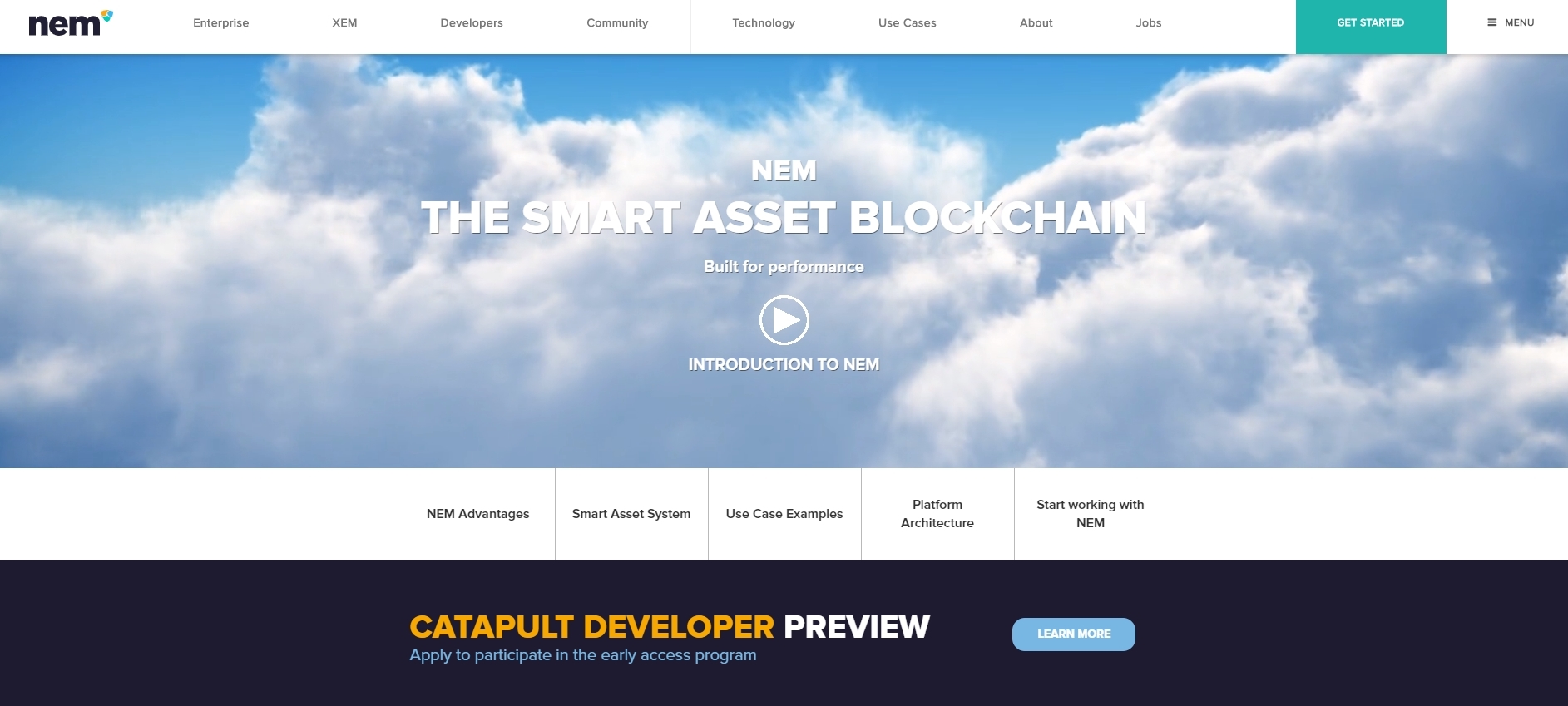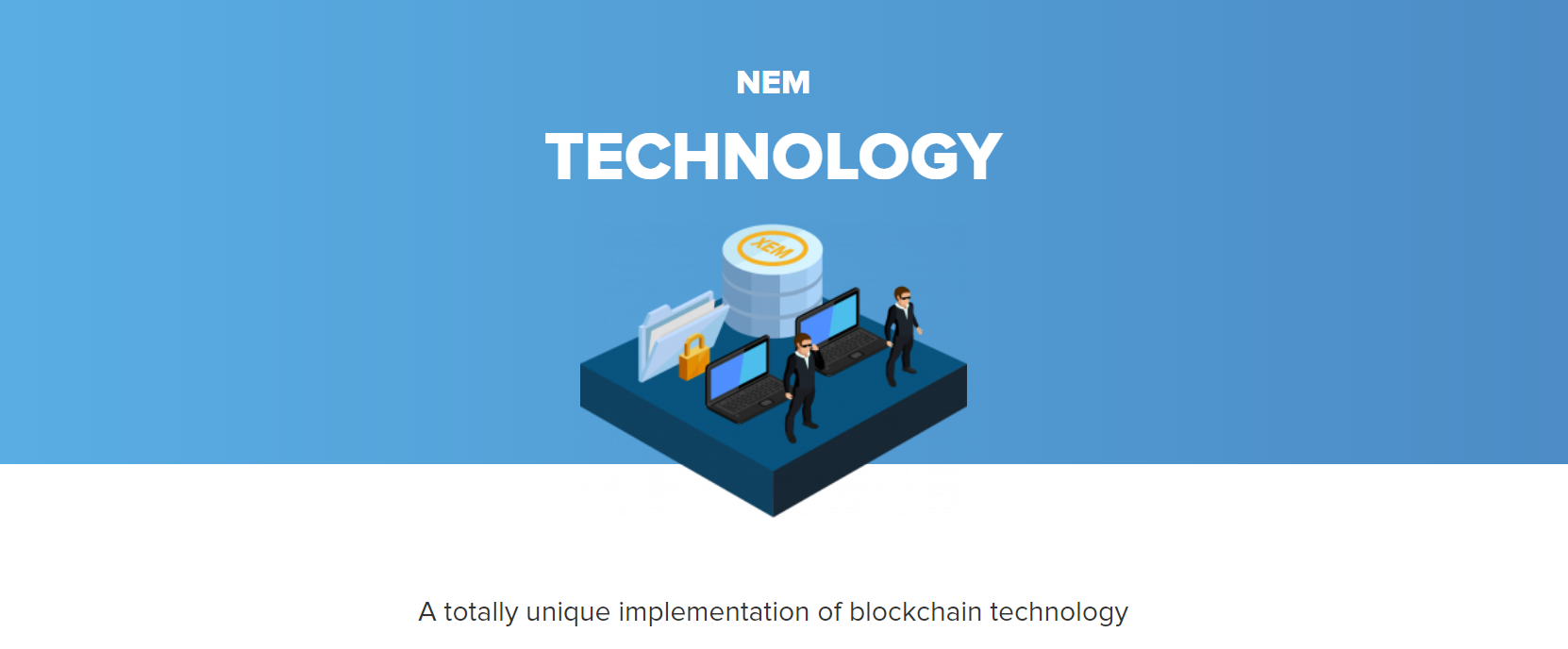What is NEM?
NEM (XEM) stands for “New Economy Movement”. It is a blockchain based cryptocurrency designed for enterprises and the global economy. NEM features a new consensus mechanism called “Proof of Importance”, a reputation system called “Eigentrust++”, an encrypted messaging system and multisignature accounts.
NEM was started by a user of the forum Bitcoin Talk. The user was inspired by Nxt, another open source cryptocurrency and payment network which has an integrated asset exchange, messaging system and a marketplace. The original plan for NEM was to be a hard fork of Nxt. The goal of the project was to create a community-oriented cryptocurrency from the ground up.
How does NEM work?
NEM works similar to Bitcoin and other cryptocurrencies. Users have access to the peer-to-peer network over a client (Nano wallet). The network consists of nodes, so-called “NEM infrastructure servers”. NEM also features a faster block time of 1 minute instead of Bitcoin’s 10 minutes or Litecoin’s 2,5 minutes. However, NEM has a list of new functions and features which make it a very unique cryptocurrency.
Proof of importance
One function that makes NEM a unique cryptocurrency is its consensus mechanism. NEM is one of the few cryptocurrencies that utilizes proof of importance as a consensus mechanism. With POI, transactions are not validated by solving a cryptographic puzzle. Instead, transaction validators of the NEM blockchain are called “harvesters”. To be a harvester you have to deposit at least 10,000 XEM in your Nano wallet. The POI network looks at following when determining who gets to verify transactions: the amount of XEM is in your wallet; how long the money has been there and the quality and number of your transactions. NEM assigns importance scores to all users of the network. The higher your score is, the more you are trusted by the network and the more likely you can verify transactions. Active users can become harvesters. They need to be connected to a supernode (a node which runs 24/7) and they can keep some of the transaction fees from the transactions they verify. In order for harvesters to become a supernode, you have to deposit at least 3,000,000 XEM.
Proof of importance has a number of advantages over both proof of work and proof of stake. It is considerably more friendly for the environment than proof of work because there is no need for huge mining farms. It is also safer than proof of stake because users can not only validate transactions when they have huge stakes of the cryptocurrency. They have to be active users in order to validate transactions. Network transaction fees are also very low on NEM. The network only takes a 0,01% fee of transactions.
Node reputation with Eigentrust++
Eigentrust++ is a reputation management algorithm for peer-to-peer networks. NEM uses Eigentrust to identify and exclude bad nodes on the network. Eigentrust evaluates a nodes past behaviour to see if it’s a bad actor or not. If a node is hostile and sends false data around the network, it is most likely that this node will be excluded from the network.
Multisignature transactions & Encrypted messages
NEM utilizes multisignature technology (multisig). This allows multiple users to have access to one account. Transactions can only be broadcast onto the blockchain if a previously defined number of account owners sign the transaction. Multisig accounts are very useful if not a single user should be in control of the account. NEM also gives users the option to send encrypted messages with their transactions.
Smart assets, Namespaces and Mosaics
Namespaces are like website domains in the NEM network. They are unique and they can have sub-namespaces, just like domains can have sub-domains. Mosaics represent digital assets on a namespace. Anything you can sell or trade can become a mosaic on the network. XEM is technically also just a mosaic on the network. Through the use of Mosaics and Namespaces, the network can manage legal documents, supply chains, real estates, cryptocurrencies and much more. The Japanese Ministry of Agriculture for example currently tracks the shipment of wild game meat on the NEM blockchain.
NEM voting module
NEM has a voting module built into their Nano wallet. Users who possess at leats 10,000 XEM can vote on certain topics. However, votes from an account with a high importance score carry more weight than votes from low importance score accounts.
Mijin
NEM features two blockchains. One is the public NEM blockchain, which everybody can access, and the other one is called “Mijin”. Mijin is a private blockchain for enterprises. Over 300 companies are currently using the Mijin blockchain. As enterprises often have confidential information, they can use Mijin and only give permission to employees of the business. Tech Bureau is an internet and software development company which currently develops Mijin in conjunction with the NEM core development team. The latest version of the blockchain is called “Catapult”. It enhances blockchain performance, making international transactions in only seconds possible.
How to buy NEM
NEM is available on shapeshift, changelly and many other cryptocurrency exchanges.


